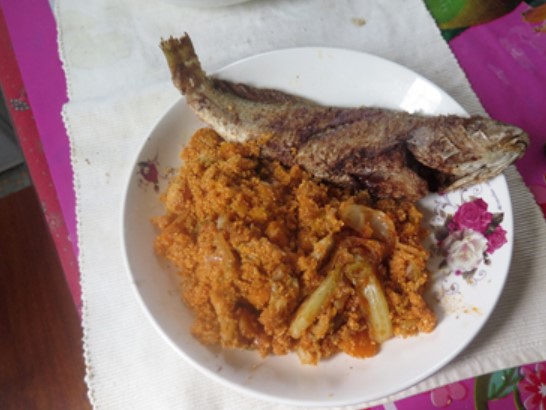Introduction to Congolese cuisine
Congolese cuisine is a diverse array of dishes that reflect the country’s cultural and geographic diversity. Located in Central Africa, the Democratic Republic of Congo has a rich culinary tradition that draws inspiration from its neighboring countries, as well as from its own indigenous ingredients and cooking techniques. Congolese cuisine’s staples include rice, beans, vegetables, meat, and fish. However, two of the most essential ingredients in Congolese cuisine are cassava and plantains.
Cassava: A Staple Food in Congo
Cassava, also known as manioc, is a root vegetable that is native to South America but widely cultivated in Africa and other tropical regions. In Congo, cassava is a fundamental ingredient in numerous dishes, from stews to bread. Cassava is a versatile ingredient that is boiled, roasted, fried, grated, and mashed. It is used to make attiéké, a couscous-like dish, and fufu, a dense dough that is eaten with sauces or stews.
Nutritional Value of Cassava
Cassava is an excellent source of carbohydrates, fiber, and essential minerals, such as calcium, potassium, and magnesium. It also contains vitamins B and C. However, cassava has low protein content and lacks some essential nutrients, such as vitamin A, which the body needs to maintain healthy eyesight. Therefore, cassava is often consumed with other foods, such as beans or meat, to provide a balanced diet.
Variations of Cassava Dishes in Congo
Cassava is an essential ingredient in Congolese cuisine, and there are countless ways to prepare it. One of the most popular dishes is makemba, which is boiled cassava served with a spicy sauce made with tomatoes, onions, and peppers. Another popular dish is pondu, which is cassava leaves cooked with palm oil, onions, and smoked fish or meat. In Kinshasa, the capital city of Congo, cassava is used to make beignets, which are fried doughnuts.
Plantains: A Common Ingredient
Plantains are a type of banana that is widely grown in Africa, the Caribbean, and Latin America. In Congo, plantains are a common ingredient that is used in both sweet and savory dishes. Plantains are rich in carbohydrates, fiber, and essential vitamins and minerals, such as vitamin C and potassium.
Different Ways Plantains are Used in Congolese Cuisine
Plantains are used in numerous Congolese dishes, such as mokaté, which is roasted plantains that are served with peanuts and spicy sauce. Another popular dish is kwanga, which is fermented cassava that is wrapped in plantain leaves and steamed. Plantains are also used to make beignets, which are fried doughnuts.
Health Benefits of Plantains
Plantains are a rich source of fiber and vitamins, such as vitamin C and potassium, which are essential for maintaining a healthy immune system. They are also high in antioxidants, which help to prevent damage to cells and reduce the risk of chronic diseases.
Conclusion: Importance of Cassava and Plantains in Congolese Dishes
Cassava and plantains are two of the most essential ingredients in Congolese cuisine. They are versatile, flavorful, and rich in essential nutrients, making them an important part of a balanced diet. With their wide range of culinary uses and nutritional benefits, cassava and plantains are sure to remain a staple in Congolese cuisine for years to come.

